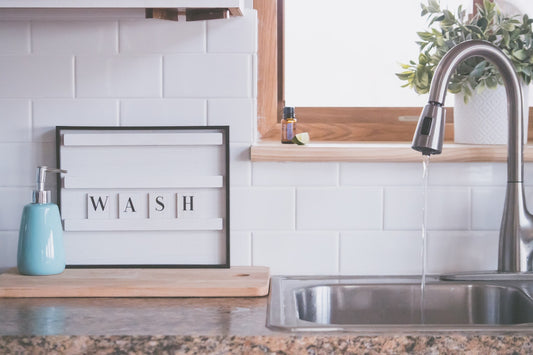Are you considering buying a reverse osmosis system?
If that’s the case, you might have read a lot about the pros and cons of these types of systems and are wondering whether you should invest in one.
Reverse osmosis is a popular water purification method used in many homes across the USA.
That’s because they’re an affordable and convenient way to have purified water. However, they’re known to waste a lot of water in the purification process, hence why they’ve sparked controversy over the last few years.
After all, water is a scarce resource that needs to be managed efficiently.
So, we’ve put together this quick guide to help you better understand how much water the reverse osmosis process wastes and effective ways to reduce the waste water ratio.
What is Reverse Osmosis?
Reverse osmosis (also referred to as RO) is a water purification method based on a series of filters used to separate ions, unwanted molecules, and larger particles from drinking water.
More specifically, the reverse osmosis process uses household water pressure to force water from a contaminated water pool to move through a series of filters, including a semipermeable membrane, into a purified water pool, leaving the contaminants behind.
Indeed, when high external water pressure is applied to the tank containing highly concentrated solute solution (such as salts), it leads the smaller water molecules to pass through to the lower pressure side.
Larger molecules, including salts, organic compounds, microorganisms, viruses, bacteria, and pharmaceuticals, are trapped on the other end. These contaminants are then washed away with water.
And the smaller water molecules that passed through the semipermeable membrane are then collected in a water tank containing the precious purified water, ready for you to consume.
How Much Water Does Reverse Osmosis Waster
One of the main drawbacks of reverse osmosis is water waste. As mentioned above, to purify the water, the reverse osmosis process uses water to wash off contaminants and impurities, and unfortunately, a lot of it will end up in the drain.
Now, assessing the exact reverse osmosis process efficiency can be a bit challenging.
That’s because residential reverse osmosis water systems can waste between 3 and 25 gallons of water to produce one gallon of purified water. However, regular reverse osmosis systems standard ratio is 1 gallon of purified water produced for 4 gallons wasted to the drain. This means that 80% of the water used in the process is wasted. Yet, reverse osmosis systems equipped with permeate pumps can reduce the water waste by up to 80% and, in some instances, improve the water waste ratio to 1:1.
So, as you can see, it’s hard to give a definite answer.
However, even though the reverse osmosis water waste ratio significantly varies depending on the manufacturer, the technology used, and the age and efficiency of the system, the reality is that the reverse osmosis method inevitably wastes water in the purification process.
How to Reduce the Reverse Osmosis Waste Water Ratio?
The good news is that there are ways to dramatically reduce the reverse osmosis waste water ratio and improve your RO system’s efficiency.
Here are a few different things you can do to help significantly increase the efficiency of your reverse osmosis system:
- Check for low water pressure: low water pressure is one of the most common causes of high RO waste water ratio. To produce purified water efficiently, reverse osmosis systems need a water pressure between 60 and 80 psi. Anything below 40 psi will be considerably less efficient and require more water to be used.
Therefore, make sure to check the pressure gauge of your system or purchase a gauge if it doesn’t come with one. This will allow you to assess your RO system’s efficiency and adjust accordingly.
A Final Word
Even though the RO process undeniably leads to water wastage, so does cleaning the dishes or having a shower. Yet, not all reverse osmosis systems are created equal, and as discussed in this post, there are ways to recycle wastewater. What’s more, technologies are constantly improving to make RO systems as efficient as possible.
So, if you’re after an efficient system that will effectively remove contaminants, leaving your water tasting great, and saving you hundreds of dollars in bottled water, don’t hesitate to take a look at our reverse osmosis system.






